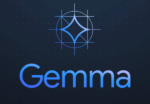
To weave a more intuitive mobile Web, individual companies and developers must navigate the various technologies and hurdles in forging those intra-app connections. As senior Android manager at online ticketing platform Eventbrite, Juan Gomez was integral in implementing mobile deep links in the Eventbrite Android app over the past year and a half. He spoke with SD Times about the difference in establishing deep links on Android, the benefits and challenges of mobile deep linking, and why he thinks Android has a leg up on iOS.
SD Times: Can you talk about what Eventbrite is doing with mobile deep linking in the Android development space?
Gomez: When I came in, we were not doing anything on deep linking at all. So my first job was to make the Android app feel more Android-y, if you will, so more in tune to the Android ecosystem, and part of that is deep linking. One of the important things about deep linking for Android is that Android has relatively good SEO. We were showing up on Google results, we just needed the last piece of the puzzle of sending people from the Google results into our app.
(Related: Deep linking: The foundation of a more intuitive mobile Web)
Then Google contacted us when they launched App Indexing. This was before they announced it at I/O. App Indexing is basically showing a button and the logo of your app on the Google search results when a user searches for something on their Android phone.
From a developer perspective, what do you see as some of the benefits to mobile deep linking?
It’s driving people into your app. As a mobile developer, you work really hard on creating a good app and a great experience for your users. Unfortunately, most users end up on your mobile website easier than they end up on your app.
Discovery is one of the weakest points of app stores right now. There are a lot of people that might not even know you have an app. Even if they have it installed on the phone, which is the key to deep linking, if they find a link to your website on Google or social media and click on it, they’ll be taken into your mobile Web experience and not your native app. Native is a way to recapture all that traffic going into your Web experience and capture it into that native app you’ve worked so hard to create. It’s a way to redirect that traffic into that native app you’ve put so much work into.
What are some challenges to a successful deep linking implementation?
There are several catches you need to be aware of. Deep linking in general is easy to do. You have to—this is something a lot of people try to do—use normal URLs. A lot of people try to create URLs that are not the URL of the website. Usually the beginning of the URL is HTTP when you’re pointing to a website, but if it’s a URI [uniform resource identifier] that’s not pointing to a website, you can have something besides HTTP.
The problem is that some people use that as a way to avoid having a normal URL under a deep linking schema and make up things that are not proper protocols for a URI address. What Google recommends is that you always use HTTP.
Talk about fragmentation in the deep linking landscape. What obstacles does it present?
Right now it’s not as fragmented, mostly because the initiatives Facebook and Google are driving haven’t quite taken off yet. But when you’re approaching it as a developer, you always have that question: Should I be doing App Links instead of native deep linking on Android? It complicates the decision-making, and, if those technologies take off, there will be a serious fragmentation problem.
What you need to be careful about is that these companies ultimately want to use this as a way to drive users into their platform. So the minute you start using App Links, for instance, Facebook wants to drive people into Facebook and own those. They’re trying to paint themselves as being an outsider that’s trying to help standardize deep linking, but they’re the ones that own and drive it, and their interests will drive how that moves forward.
With any fragmentation issues, the biggest problem is having enough time and resources to support multiple strategies, if that’s where you arrive at. If you’re thinking of something more cross-platform, App Links is really the only alternative there is right now. But if you’re just targeting Android, native deep linking is where you’d want to look.
Then there’s the Google component of course—they want to drive more users to their service. That’s what App Indexing is, that next step in deep linking on the Google side to drive more users into the Google platform and control how those links work.
How do you view the various unofficial standards and deep linking specifications being pushed within the open-source community?
The biggest problem the open-source initiatives have right now is that there’s not a player the size of Google, Facebook or Twitter behind them. Unfortunately, that’s been the trend lately. A lot of the standardization efforts are not moving as fast as they used to, or even dying. Facebook and Twitter have so much power now over their audiences that they’re just not interested in collaborating and following other people’s rules, when they basically own the audience.
We’ve had issues with Google and Facebook lately with their implementation. Especially on App Indexing, that’s something that’s going to be resolved or not based on the interests of the big companies driving this. The future is, as more people get into the space, there needs to be a standard that’s easy to follow and works across the board, cross-platform.
Where would you say deep linking is right now in terms of development and adoption, and what’s your vision for where it will go in the near future?
Right now it’s in its infancy. There’s so much more potential for what you can do with deep linking. On the Android platform specifically, Google is starting to explore some of those next steps with what they’re doing now, where you can actually surface content inside your app so that it shows up in search. That needs to be something that can happen across the board. Something more platform-wide where different apps can query your app for content and then display different results on the app installed on your phone.
As more developers try to adopt and grow, the stronger the benefits get and the more people start building things in this space. The next phase (why Android is going fast) is because this is about different apps communicating, and iOS has been really slow in adopting that. For instance, only now on iOS 8 can you finally share something with an unregistered app. Apps registered by the operating system like Mail or Messages were the only options before iOS 8. Android is ahead on that, but this is ultimately about communicating between apps.
Right now, deep linking is a big Web component because the Web has been the technology that has drove the past two decades. But as mobile becomes the technology of this decade, deep linking will be more and more about the communication between apps and of dropping that Web legacy.
A lot of things happening in deep linking right now are deeply rooted in the Web. I think the more we move into inter-app communication, the more those Web roots will start dropping and the more innovation we’re going to see in this space, as you can hopefully navigate just between a web of apps on your phone, and not websites or Web components.






